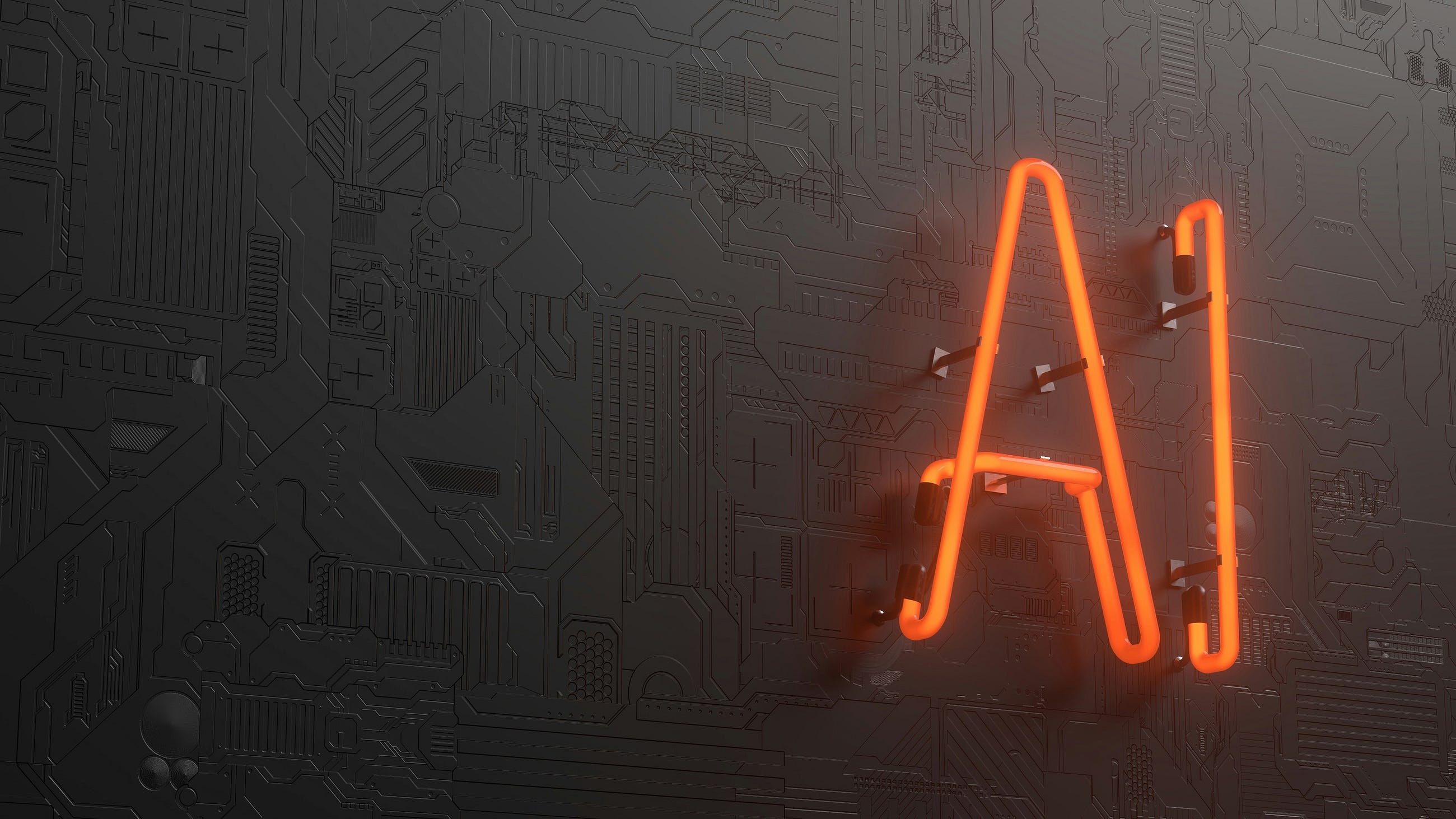Businesses run on structured data. From financial ledgers to supply chain logistics, tables and relational data are the backbone of the global economy. And for years, we’ve applied artificial intelligence (AI) to this data, but with a fundamental limitation: we had to build a custom AI model for every single prediction task.
Until now organizations needed one model to forecast demand; another one to predict late payments; a third one for identifying sales opportunities; and so on. Each model required a time-consuming and expensive investment with dedicated teams, lengthy training cycles, and constant maintenance. This fragmented approach, while powerful in isolation, has created a complex and slow-moving AI landscape.
What if we could change that? What if, instead of a huge amount of narrow AI specialist models, you had a single, universal AI engine that could understand your relational business data and address virtually any predictive task?
This is exactly the gap that sap-rpt-1 closes for SAP’s customers and partners. At SAP TechEd this year, we launched our table-native foundation model, pre-trained to understand your table-based business data out-of-the-box across a vast range of predictive tasks, without the need for task-specific training or fine-tuning. It’s designed to elevate predictions in enterprises to a new level. Let’s take a closer look!
A Paradigm Shift: In-Context Learning for Business Data
The concept of a foundation model, a large-scale model pretrained on huge amounts of data, has already transformed how we interact with text and images. We now bring this same paradigm to the unique domain of relational business data.
The abbreviation ‘rpt’ in sap-rpt-1 stands for Relational Pretrained Transformer. This model is a natural evolution of SAP’s decades-long leadership in managing the world’s most critical business data. It is table-native, which means that from ground up, it was designed with a deep understanding of the relationships, structures, and semantics inherent in tabular enterprise data.
But its true power lies in a capability called in-context learning.
Imagine you have a brilliant new consultant. Instead of sending them to a six-month training course for every new project, you can simply sit down with them, show them a few examples of what you need – “Here are some customers who paid on time, and here are some who paid late” – and they immediately recognize the pattern and can predict the outcome for the next thousand customers.
This is exactly how sap-rpt-1 works. It doesn’t require task-specific training or fine-tuning. You provide labeled table row examples of your predictive task in-context, and the model delivers a highly accurate prediction instantly. One single model, serving a huge variety of enterprise prediction tasks, across finance, supply chain, HR, and more, simply by each time seeing examples from a different domain in its context.
The Engine: From Scientific Breakthrough to Real-World Application
The science behind sap-rpt-1, developed by our world-class AI researchers, was recently published to this year’s NeurIPS conference, one of the most prestigious AI conferences. The key here is the table-native design. This is where sap-rpt-1 is breaking new ground: it is a transformer-based architecture (remember the T in RPT?), just as LLMs are; but whereas LLMs are optimized to deal with text that comes in a linear sequence, our table-native model is designed to detect connections and dependencies across rows and columns in large enterprise tables, with optimized processing for the unique semantics and datatypes found in business data.
Figure 1: High-level schematic of the relational pretrained transformer architecture, including semantic embeddings, table-native 2D attention scheme and classification/regression heads for output generation
If that all got a little too technical for your taste, what matters is that we see best-in-class performance. On public scientific benchmarks, the open-source variant sap-rpt-1-oss performs on par with the very best AI systems, even when these have been carefully tuned for each individual task. The results are covered in more detail in the paper.
More impressive still, on SAP-specific benchmarking problems that mirror the real business complexity our customers face, the commercial model variants of sap-rpt-1 outperform task-specific models substantially, as can be seen in the following benchmark:
Figure 2: Relative improvement (error reduction factor) of sap-rpt-1-large over narrow AI predictions, per SAP domain
Up to two times fewer prediction errors than optimized, task-specific narrow AI models – cutting downstream costs from every incorrect prediction. Plus, far greater flexibility, zero effort for re-training and updating the model. Plain and simple!
The Elephant in the Room: sap-rpt-1 vs. State-of-the-Art LLMs
Now, the big question you might have is, why not just use an LLM? These models are extremely versatile, out-of-the-box knowledgeable, and become more powerful with every new release. So why not just do a bit of prompt engineering, and let your enterprise prediction task be solved by an LLM?
While generally it’s not very difficult to get an LLM to solve all kinds of enterprise predictive tasks (we’ve tested it!), there are two caveats:
LLMs are flexible, but not always that accurate
LLMs need to process relational data as plain text strings, which are much more error-prone and ineffective compared to a table-native processing. For a good reason, tabular and relational data processing have manifested themselves – probably no human would think that doing a financial close for a multi-national corporation in prose is a good idea.
This effect also shows when benchmarking sap-rpt-1 against leading LLMs on tabular prediction tasks from the enterprise domain: we found the prediction quality of sap-rpt-1 to be substantially ahead of LLMs, with a much lower error rate – see Figure 3, and by its design a much lower risk for hallucinations.
Figure 3: Relative improvement (error reduction factor) of sap-rpt-1-large over state-of-the-art LLM predictions, per SAP domain
LLMs are neither fast, nor efficient
Compared to LLMs, which are typically much larger in model size and computational complexity due to their versatility, sap-rpt-1 is dramatically more efficient. Using an LLM to perform the same prediction task requires up to 100,000 times more floating point operations (FLOPs) and takes up to 50 times longer (despite running on substantially larger hardware). This level of efficiency not only reduces computational costs but also makes sap-rpt-1 ideal for time-sensitive scenarios and environments with large context data at scale.
For these reasons, we have built sap-rpt-1 from the ground up as a table-native model. We think it opens a new chapter in enterprise AI that extends the capabilities for foundation models towards relational data. While general-purpose LLMs exemplify most versatile natural language capabilities, sap-rpt-1 excels in the important domain of predictions on tabular enterprise data.
What This Means for Your Business: Getting Insights in Minutes, not Months
By moving from a fragmented to a universal model, the benefits are clear:
Radical Agility & Speed: Customers can go from a new business question to a live prediction in a fraction of the time. There is no need to iterate over hours-long model-training jobs, and companies can adapt to market changes with AI that learns on the fly.Dramatically Lower Operations Effort: Instead of building, deploying, and maintaining hundreds of separate models, customers and partners benefit from a single, centrally managed foundation model embedded within the SAP ecosystem they trust.Superior Performance Where It Counts: Our customers can achieve higher accuracy on their own complex business problems, leading to better decisions and outcomes.Democratization of AI: Business experts and analysts are empowered to generate their own predictions without needing deep data science expertise. Users benefit from interactive predictions instead of weeks of feature engineering and slow-moving development cycles.
Consider the possibilities:
Finance: An accountant needs to assign cost centers, general ledger accounts and tax codes to invoices. Instead of commissioning a new AI project, the accountant can simply provide sap-rpt-1 with a few examples from the last quarter – delivering the prediction in almost no time.Supply Chain: A logistics manager is facing a new, unexpected disruption. They can immediately leverage sap-rpt-1 to predict which shipments are most likely to be impacted, using real-time data and a handful of historical examples.Sales: A sales manager wants to identify which leads are most likely to convert based on a new marketing campaign and can map the business question to the company’s data, provide examples of past successes and failures to sap-rpt-1, and get the answer straight away.
This is a shift from often multi-month development cycles to near-instantaneous business insight.
See For Yourself: The SAP-RPT Playground
The introduction of sap-rpt-1 marks a major step forward in our mission to embed powerful, accessible AI across the enterprise. It represents a move towards a more unified and efficient AI architecture for business applications. sap-rpt-1 is planned for general availability on the generative AI hub of SAP’s AI Foundation in Q4 2025. And of course, we will leverage this new technology to supercharge our own applications, delivering even greater value and innovation to our customers.
Can’t wait? Try a preview version of sap-rpt-1 now for free – via no-code UI or via API at https://rpt.cloud.sap.
Also don’t miss to check out the open source variant sap-rpt-1-oss, available on HuggingFace and GitHub.
Co-authored by Dr. Janick Zaehringer-Frasch, Dr. Sam Thelin, Dr. Johannes Höhne, Dr. Markus Kohler, Oscar Cediel, Dr. Christiane Kubach, Dr. Johannes Hoffart, Mayank Shrivastava, Walter Sun, PhD, and Dr. Philipp Herzig.
Businesses run on structured data. From financial ledgers to supply chain logistics, tables and relational data are the backbone of the global economy. And for years, we’ve applied artificial intelligence (AI) to this data, but with a fundamental limitation: we had to build a custom AI model for every single prediction task.Until now organizations needed one model to forecast demand; another one to predict late payments; a third one for identifying sales opportunities; and so on. Each model required a time-consuming and expensive investment with dedicated teams, lengthy training cycles, and constant maintenance. This fragmented approach, while powerful in isolation, has created a complex and slow-moving AI landscape.What if we could change that? What if, instead of a huge amount of narrow AI specialist models, you had a single, universal AI engine that could understand your relational business data and address virtually any predictive task?This is exactly the gap that sap-rpt-1 closes for SAP’s customers and partners. At SAP TechEd this year, we launched our table-native foundation model, pre-trained to understand your table-based business data out-of-the-box across a vast range of predictive tasks, without the need for task-specific training or fine-tuning. It’s designed to elevate predictions in enterprises to a new level. Let’s take a closer look!A Paradigm Shift: In-Context Learning for Business DataThe concept of a foundation model, a large-scale model pretrained on huge amounts of data, has already transformed how we interact with text and images. We now bring this same paradigm to the unique domain of relational business data.The abbreviation ‘rpt’ in sap-rpt-1 stands for Relational Pretrained Transformer. This model is a natural evolution of SAP’s decades-long leadership in managing the world’s most critical business data. It is table-native, which means that from ground up, it was designed with a deep understanding of the relationships, structures, and semantics inherent in tabular enterprise data.But its true power lies in a capability called in-context learning.Imagine you have a brilliant new consultant. Instead of sending them to a six-month training course for every new project, you can simply sit down with them, show them a few examples of what you need – “Here are some customers who paid on time, and here are some who paid late” – and they immediately recognize the pattern and can predict the outcome for the next thousand customers.This is exactly how sap-rpt-1 works. It doesn’t require task-specific training or fine-tuning. You provide labeled table row examples of your predictive task in-context, and the model delivers a highly accurate prediction instantly. One single model, serving a huge variety of enterprise prediction tasks, across finance, supply chain, HR, and more, simply by each time seeing examples from a different domain in its context.The Engine: From Scientific Breakthrough to Real-World ApplicationThe science behind sap-rpt-1, developed by our world-class AI researchers, was recently published to this year’s NeurIPS conference, one of the most prestigious AI conferences. The key here is the table-native design. This is where sap-rpt-1 is breaking new ground: it is a transformer-based architecture (remember the T in RPT?), just as LLMs are; but whereas LLMs are optimized to deal with text that comes in a linear sequence, our table-native model is designed to detect connections and dependencies across rows and columns in large enterprise tables, with optimized processing for the unique semantics and datatypes found in business data.Figure 1: High-level schematic of the relational pretrained transformer architecture, including semantic embeddings, table-native 2D attention scheme and classification/regression heads for output generationIf that all got a little too technical for your taste, what matters is that we see best-in-class performance. On public scientific benchmarks, the open-source variant sap-rpt-1-oss performs on par with the very best AI systems, even when these have been carefully tuned for each individual task. The results are covered in more detail in the paper.More impressive still, on SAP-specific benchmarking problems that mirror the real business complexity our customers face, the commercial model variants of sap-rpt-1 outperform task-specific models substantially, as can be seen in the following benchmark:Figure 2: Relative improvement (error reduction factor) of sap-rpt-1-large over narrow AI predictions, per SAP domainUp to two times fewer prediction errors than optimized, task-specific narrow AI models – cutting downstream costs from every incorrect prediction. Plus, far greater flexibility, zero effort for re-training and updating the model. Plain and simple!The Elephant in the Room: sap-rpt-1 vs. State-of-the-Art LLMsNow, the big question you might have is, why not just use an LLM? These models are extremely versatile, out-of-the-box knowledgeable, and become more powerful with every new release. So why not just do a bit of prompt engineering, and let your enterprise prediction task be solved by an LLM?While generally it’s not very difficult to get an LLM to solve all kinds of enterprise predictive tasks (we’ve tested it!), there are two caveats:LLMs are flexible, but not always that accurateLLMs need to process relational data as plain text strings, which are much more error-prone and ineffective compared to a table-native processing. For a good reason, tabular and relational data processing have manifested themselves – probably no human would think that doing a financial close for a multi-national corporation in prose is a good idea.This effect also shows when benchmarking sap-rpt-1 against leading LLMs on tabular prediction tasks from the enterprise domain: we found the prediction quality of sap-rpt-1 to be substantially ahead of LLMs, with a much lower error rate – see Figure 3, and by its design a much lower risk for hallucinations.Figure 3: Relative improvement (error reduction factor) of sap-rpt-1-large over state-of-the-art LLM predictions, per SAP domainLLMs are neither fast, nor efficientCompared to LLMs, which are typically much larger in model size and computational complexity due to their versatility, sap-rpt-1 is dramatically more efficient. Using an LLM to perform the same prediction task requires up to 100,000 times more floating point operations (FLOPs) and takes up to 50 times longer (despite running on substantially larger hardware). This level of efficiency not only reduces computational costs but also makes sap-rpt-1 ideal for time-sensitive scenarios and environments with large context data at scale.For these reasons, we have built sap-rpt-1 from the ground up as a table-native model. We think it opens a new chapter in enterprise AI that extends the capabilities for foundation models towards relational data. While general-purpose LLMs exemplify most versatile natural language capabilities, sap-rpt-1 excels in the important domain of predictions on tabular enterprise data.What This Means for Your Business: Getting Insights in Minutes, not MonthsBy moving from a fragmented to a universal model, the benefits are clear:Radical Agility & Speed: Customers can go from a new business question to a live prediction in a fraction of the time. There is no need to iterate over hours-long model-training jobs, and companies can adapt to market changes with AI that learns on the fly.Dramatically Lower Operations Effort: Instead of building, deploying, and maintaining hundreds of separate models, customers and partners benefit from a single, centrally managed foundation model embedded within the SAP ecosystem they trust.Superior Performance Where It Counts: Our customers can achieve higher accuracy on their own complex business problems, leading to better decisions and outcomes.Democratization of AI: Business experts and analysts are empowered to generate their own predictions without needing deep data science expertise. Users benefit from interactive predictions instead of weeks of feature engineering and slow-moving development cycles.Consider the possibilities:Finance: An accountant needs to assign cost centers, general ledger accounts and tax codes to invoices. Instead of commissioning a new AI project, the accountant can simply provide sap-rpt-1 with a few examples from the last quarter – delivering the prediction in almost no time.Supply Chain: A logistics manager is facing a new, unexpected disruption. They can immediately leverage sap-rpt-1 to predict which shipments are most likely to be impacted, using real-time data and a handful of historical examples.Sales: A sales manager wants to identify which leads are most likely to convert based on a new marketing campaign and can map the business question to the company’s data, provide examples of past successes and failures to sap-rpt-1, and get the answer straight away.This is a shift from often multi-month development cycles to near-instantaneous business insight.See For Yourself: The SAP-RPT PlaygroundThe introduction of sap-rpt-1 marks a major step forward in our mission to embed powerful, accessible AI across the enterprise. It represents a move towards a more unified and efficient AI architecture for business applications. sap-rpt-1 is planned for general availability on the generative AI hub of SAP’s AI Foundation in Q4 2025. And of course, we will leverage this new technology to supercharge our own applications, delivering even greater value and innovation to our customers.Can’t wait? Try a preview version of sap-rpt-1 now for free – via no-code UI or via API at https://rpt.cloud.sap.Also don’t miss to check out the open source variant sap-rpt-1-oss, available on HuggingFace and GitHub.Co-authored by Dr. Janick Zaehringer-Frasch, Dr. Sam Thelin, Dr. Johannes Höhne, Dr. Markus Kohler, Oscar Cediel, Dr. Christiane Kubach, Dr. Johannes Hoffart, Mayank Shrivastava, Walter Sun, PhD, and Dr. Philipp Herzig. Read More Technology Blog Posts by SAP articles
#SAP
#SAPTechnologyblog











